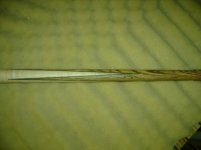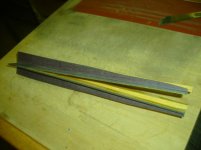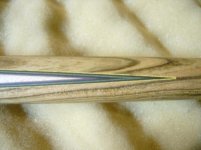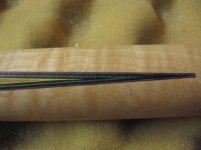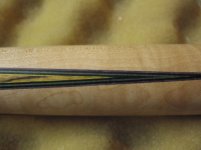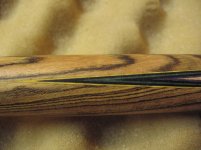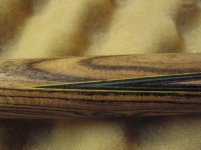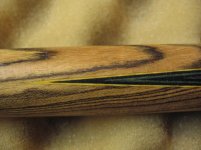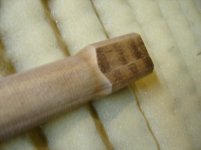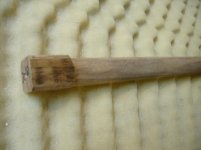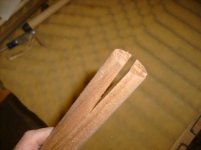So Dave,
Structural integrity is the only point that you don't agree with. As the Canadian said about wood joinery, have you seen a high perfomance shaft come apart because of the glue line? Do you mean that the X, 314, OB1 have an expiration date? They are staking their reputation as well as millions of dollars on flat wood joinery with todays great adhesives. The shaft has most of the force vectors aligned axially with the glue lines. In your opinion, this is not structurally sound. I am sure that a few of the high performance shafts have failed at a glue line but not because of the design or adhesive. More of a process failure escape. These shafts have anywhere from 6 to 54 glue lines each. The Canadian design can have approx. 4.5 square inches of surface contact to bond the 4 pieces together. That is more than adequate to displace the axial forces it will ever see.
First, lets point out that the length of the joint we have been talking about is for the first 10" from the joint we have 4 glue lines AT an angle that when frontal force is applied it pushes those gluelines outward, not inward, and then the rest of the butt has a glueline about 19" straight down the middle. Lined up with that from the front is a 15" or so long 'wedge' of a forearm that the force of play pushes against. Now introduce a weight pin from the bottom, let's say about 4" long, right down the middle of the butt which shortens the glue line, and due to heat of drilling/boring it out, may have a bad effect on the strength of the bond afterwards. Now your straight glueline holding 4 side pieces together is actually about 12-13" long. I'm not a structual engineer, but know enough that that isn't the best setup. Now let's also remember that this is in a builder's shop without the 1.2 million dollar assembly equipment/presses, expensive design teams, etc. and is built using normal epoxies ( read this link...http://forums.azbilliards.com/showthread.php?t=182588)
And you are comparing this to a 29" long laminated shaft that IS built using 1.2 million dollar equipment, and glues/epoxies that we cannot get which may use heatbonding, or other catalistic procedures that make for a superior bond, and you want me to believe that it's the same situation???
You state that in a laminated shaft the forces are aligned axially, you are correct with that, but concerning a butt constructed in the way described in Candien's post, That is not the case, you are forgeting the first 12" or so are wedgeshaped spreading outward, and have a hole drilled at the other end for a weightbolt. The high tech lam. shafts don't have that, they have 29" of straightness, so to compare the 2 cases as equals is, IMO, is a mistake.
This is my opinion, and I may be incorrect as I'm not an engineer, but I don't believe most of us on here are.
I was just working on a repair for a friend that is a Mizerak cue that has an patchwork of various angled wood pieces glued together with 2 slabs on the outside. It looks great, but a lot of the gluelines for the wood pieces are loosed up. It came in for a new shaft due to the old one being warped, but the pin wasn't in straight either, So I removed and replace the pin, and when screwing in the new pin, even though I had a glue relief on the pin, epoxy was running out of every seam on the forearm the length of the hole for the pin. I talked to the owner and he said it did have a buzz sound when hitting the balls. I used an eyeloop and found it had cracks all along the gluelines in the forearm. Glues can do alot, but it cannot make up for a lack of a mechanical bond for extended usage or time IMO. Wood can and will either shrink or swell. In the case of laminated shafts, the layers are usually very thin, so much that the glues can actually pentatrte all the way thru the layer, making an impregnated wood shaft. This design doens't have that, it's just a thin layer of glue. To me it's only common sense, This design may work for a time, but a failure is down the road. just my opinion.
Dave
